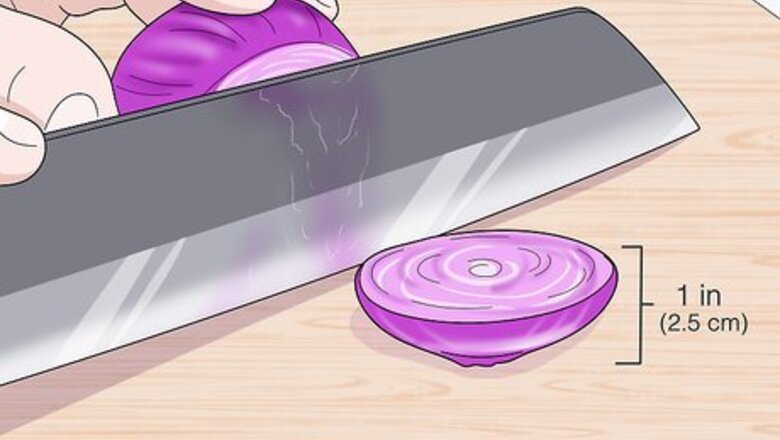
views
Preparing an Onion Cutting
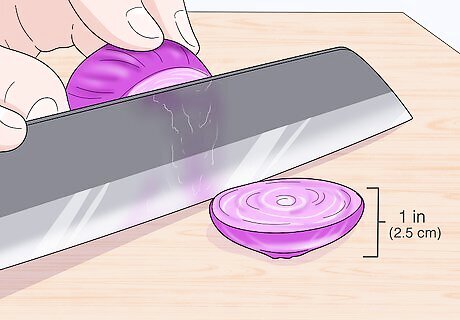
Chop the onion about 1 in (2.5 cm) from the bottom. Place your onion on a cutting board and, using a sharp knife, cut off the bottom and remove the outer peel. Your onion piece should be about 1 in (2.5 cm) long to grow a healthy onion. If you're growing the onions outside, start your cuttings in early spring. For onions grown indoors, any time of the year is fine. You can use most onion varieties, including grocery store-bought onions, for growing more onions. This technique works best if you work with a fresh onion that has not yet gone bad.
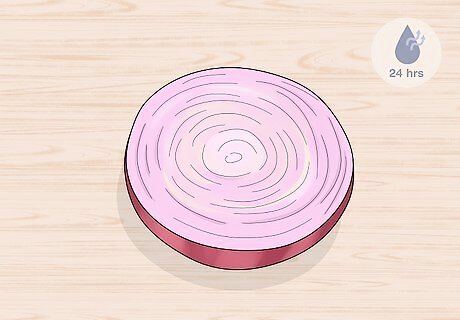
Leave the onion bottom out to dry for 12-24 hours. After chopping the onion, discard the rest of the onion and place the bottom on a flat, dry surface with the cut side up. Let the onion bottom dry out for up to a day until it is calloused and dry to the touch. If not discarding, you can use the rest of the onion for cooking or for compost if you prefer.
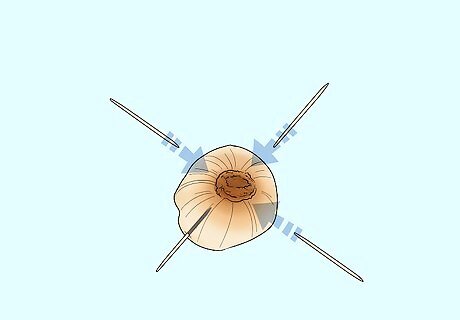
Poke toothpicks into each side of the onion. Divide your onion bottom into 4 sides, and poke a toothpick halfway into each side. The toothpicks should be equally spaced apart so they resemble an "X" in spacing. This will allow you to suspend your onion over water while it roots.

Hang the onion over a small bowl of water. Fill a bowl with water to the brim and place it on a flat surface. Position the onion so the bottom just touches the top of the water, and leave it to grow for 3-4 days. Plant the cutting when it begins growing small, white roots from the bottom. The bowl's diameter should be less wide than the length of the toothpicks. To help the cutting grow faster, suspend the onion near a sunny window or place it outdoors.
Planting Your Onion Cutting
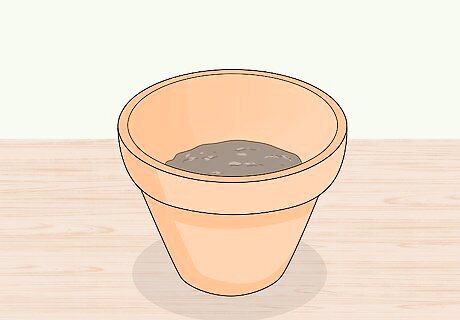
Fill a pot with well-draining soil. Purchase a well-draining soil mix and a large pot with holes in the bottom from a plant nursery. Fill the pot with the soil to about halfway full—you will fill it the rest of the way when you plant the onion cutting. You can also plant your onion bottom outside if your garden has well-draining soil. You can test to see if soil is well-draining by digging a 12 in (30 cm) hole in the soil and filling it with water. If the water drains in 5-15 minutes, the soil is well-draining.
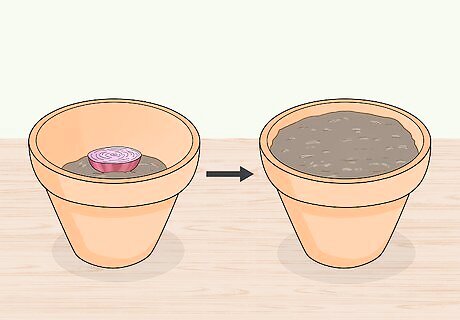
Place the onion cutting in the soil and fill the pot with soil. When the onion cutting grows white roots from the bottom, position it in the center of the soil. Fill the rest of the pot with soil over the onion until 1–2 in (2.5–5.1 cm) from the top of the pot. Depending on your preference, you can keep the onion cutting indoors or outdoors in sunny weather. If you plant the whole cut bottom as one piece, you may get more than one new onion but they will likely be crowded together and small. The number of plants a single onion can grow will vary from 1-6, the onion pictured above can be divided into two. To get multiple full size new onions from a single onion bottom, use a sharp knife to divide the onion bottom, leaving a portion of the roots on each section, as well as the leaves if it has started sprouting.
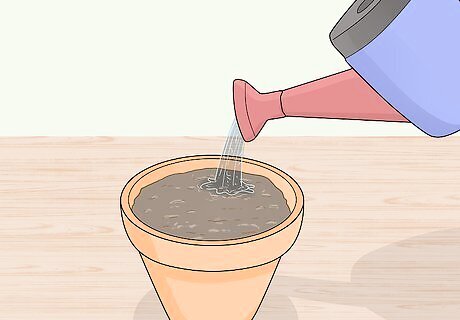
Water the onion cutting immediately after planting it. Watering the onion cutting helps it adapt to its new environment and grow roots faster. Give your onion enough water that the soil is damp to the touch, but not soaking wet.
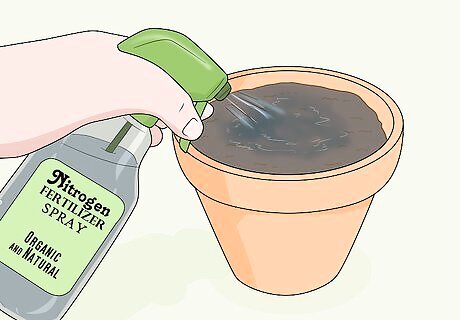
Spray nitrogen fertilizer into the soil after watering it. Onions thrive in soil with a high nitrogen content. Spray nitrogen fertilizer directly into the soil and mix it with your hands to give your onion the nutrients it needs to grow. You can buy nitrogen fertilizer from most garden stores or nurseries. Check the label to determine how much fertilizer to spray into the soil.
Caring for Your Onion
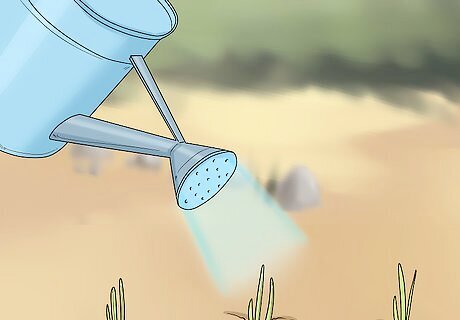
Give your onion about 1 in (2.5 cm) of water per week. Onions need plenty of water to stay healthy and grow more onions. Check the soil every day—if it feels dry to the touch, water your onion until it feels moist.
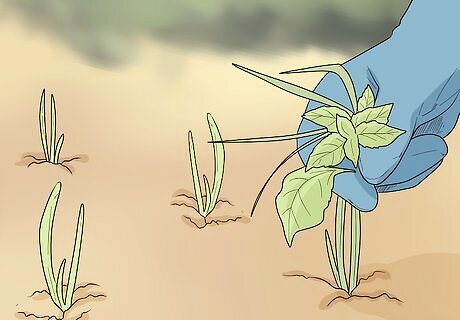
Weed your garden regularly, if outside. Onions have a hard time competing with invasive plants, and weeds can steal their water and nutrients. Check your garden often for weeds and, if you notice any, pull them right away. Avoid spraying weed killers around the onion, as most herbicides can kill both weeds and garden plants. Check for small insects or other pests on your onion as well and, if you see any, spray the onion with a non-toxic, plant-friendly insect repellent.

Fertilize your onion every 2 weeks. Fertilizing your onion plant regularly helps it grow large, healthy bulbs. Spray the onion plant at least twice a month with a nitrogen-rich fertilizer until the onion plant's bulb starts to poke from the soil. When the bulb starts poking out of the soil, stop fertilizing the onion until you harvest it.
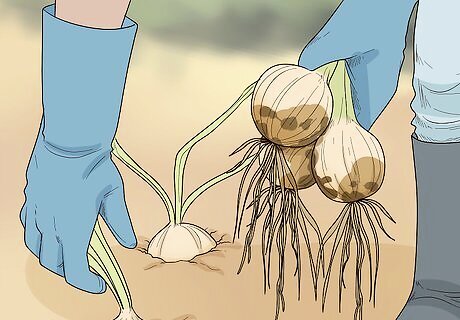
Harvest your onion when it forms flowers. When your onion starts to grow flowers, it's ready to harvest. Loosen the soil around the onion with your shovel and pull the onion by the base of its green foliage to pull it out of the ground. On average, it takes onions grown from cuttings about 90-120 days to grow a new bulb. EXPERT TIP Steve Masley Steve Masley Home & Garden Specialist Steve Masley has been designing and maintaining organic vegetable gardens in the San Francisco Bay Area for over 30 years. He is an Organic Gardening Consultant and Founder of Grow-It-Organically, a website that teaches clients and students the ins and outs of organic vegetable gardening. In 2007 and 2008, Steve taught the Local Sustainable Agriculture Field Practicum at Stanford University. Steve Masley Steve Masley Home & Garden Specialist Wondering if it's okay to take off the green onion shoots? Pat Browne and Steve Masley of Grow it Organically say: "You can harvest the shoots from onions whenever you want, but if you want larger bulbs, leave them in place. Each leaf feeds a layer of the onion, so if you have 8 or 10 leaves, you'll have 8 or 10 growing layers on the onion."




















Comments
0 comment